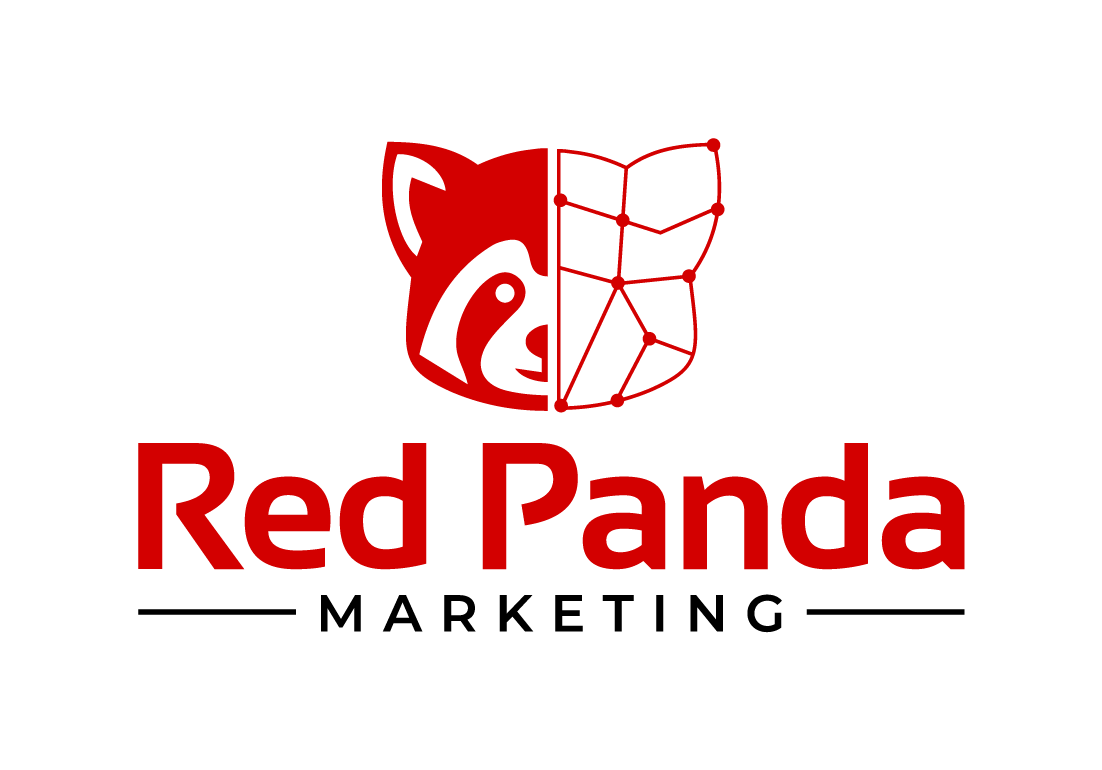9 Steps to Building a Great Website for Your Small Business
Are you looking to build a new startup website or make your current site more effective? Here are nine key steps to get you started and help your small business website stand out.

1. Obtain a Good Domain Name
The domain name, or website address, is typically the starting point for visitors to access your site. Choosing a domain name that is easily recognizable and memorable is essential. Some things to consider when picking a domain name:
- Make it easy to spell
- Use actual words - not made-up or slang
- Keep it short
- Avoid hyphens and numbers
- Use priority keywords and location users are searching on for SEO purposes
Before nailing your name, do research on the domain name. What comes up when you Google the name? Is your suggested domain name different enough from others already being used? Then choose a domain name registrar like GoDaddy, Domain.com, or Bluehost, to name a few. You can iterate on your initial domain name if the price isn't what you are willing to pay for the name.
2. Choose a Content Management System (CMS) or Hire a Web Designer
When creating a website for your small business, you have two options – you can either take care of the website design and development yourself or hire a marketing agency with website design services to build the website for you.
If you decide to go down the DIY route, you will be responsible for all aspects of the website setup and creation process, including selecting a Content Management System (CMS). A CMS is a software that helps you create, manage, and modify content on your website. Several CMS options on the market don't require any coding skills. But you'll need to decide if you have the time and expertise to take on the entire process yourself or hire a marketing/website design agency. If you hire an agency or developer, they will likely already have a preferred CMS that they are comfortable with and will build your CMS on for you.
If you'd like to evaluate your own CMS options and aren't very technical, a few things you want to look for:
- Make sure your CMS is scalable
- Choose a CMS that supports omnichannel
- Confirm the CMS has good support
- Choose an intuitive User Interface (UI)
- Make sure the CMS has APIs and supports integrations with other apps you are using
3. Purchase Website Hosting
Most marketing designers or agencies you work with will include hosting services and provide you with tiered plans to accommodate your budget and the level of support required.
A website host is a company that provides the technology and services needed for displaying a website online. You connect your domain name to your hosting provider so that when users visit your website address, they are shown the website you store on your hosting account.
4. Create Your Content Plan
Website content is always a chicken or egg scenario - should content come first, or should the design including the wireframe and architecture come first? It is entirely our opinion, but we believe getting your unique story straight so that your ideal audience clearly understands the problems you solve, how you solve their problems, and why you are the best solution to meet their needs is the critical first step before designing the site. Defining your content plan is a big step because you want to document the user journey to engage your audience and drive the right call to action. What ultimately do you want your audience to do, and how does the story and message you craft guide your audience along the path to demonstrate you meet their needs so that they want to engage with or buy from you?
Your home page is often the first-place visitors will land. This page is your first impression. You don't need to spill the entire story on this page. Instead, please think of the home page as a table of contents to quickly guide visitors to the information they are looking for based on where they are in their buying journey. You want your ideal customers to stick around for as long as possible until they decide to take action with you. Content is a big topic, but ensuring each page has a purpose and direction while supporting your overall narrative is critical.
5. Create a Unique and Engaging Website User Interface
It is time to bring your message and words to life with design elements that reflect your brand. The design will help your audience get to know you better and facilitate easy navigation throughout the site. A good website user interface should be intuitive and visually appealing. The information should be presented clearly and concisely to make a positive impression on the visitor.
There are a lot of elements to consider when planning your design, but they can essentially be broken down into these categories:
- Colors - for the overall site, background, icons, fonts, lines, and more
- Text - font, size, color, spacing, and more
- Buttons - color, format, and text to help your call to action stand out
- Images - including iconography, photography, graphics
- Spacing - between sections, images, text, and more
Many sites are built on "templates" or "themes," providing a visual framework. You can completely
customize these templates and themes, but they often inspire creativity rather than having to start from a blank page.
Don’t forget to consider all devices your audience will use to access your website - desktop, mobile, and tablet. Even though your specific audience might not visit your site often from mobile, with over 60% of searches taking place on a mobile device, know that Google rewards sites in search ranking that are most mobile friendly. If you know your audience will be heavy mobile users, creating a custom-built website for mobile devices is a good idea.
Focus on your ideal customer when building your user interface. Think about how they are coming to your site, what they already know about you, what information they are looking for, what you want them to know about you, and what actions you want them to take. Your ideal customers that visit your site may be at different phases of their buyer's journey, which could be very early in their research and evaluation or later in their process. It is essential to give your users options so they can easily and quickly navigate to the information they seek aligned with where they are in their decision process. You want them to buy from you. But if the timing isn't right, you want them to at least take an action with you - perhaps sign up for your blog or newsletter or download one of your documents so that you receive their contact information and can remain in touch by communicating additional details until they have enough confidence and are ready to buy from you.
6. Optimize Your Small Business Website for Search Engines
Search engine optimization (SEO) is essential for small businesses to maximize their online presence and attract new customers. SEO helps you rank higher for relevant search terms and ensure your website is found by potential customers looking for the products or services you offer. As you build your website, you can ensure your priority keywords are well-represented throughout the site. However, once your initial website is published, and you start promoting it, you can put a plan in place to continuously optimize for SEO.
SEO mainly includes the following practices:
- Keyword prioritization: You will continue to refine your keywords based on what your ideal customers are looking for and track what your competitors are doing; then, you will constantly be writing content for pages or blogs that will continue to help you rise in search rankings.
- On-page SEO and Technical SEO: You will also look for technical opportunities to improve your site's speed and user interface to help improve search rankings.
- Generate backlinks: You will look for opportunities to have other sites link back to your site, called backlinks links so that search engines see you as an authority on your topic or category.
- Increase reviews: You’ll want to generate and showcase your reviews on major sites like Google, Yelp and Facebook
- Have an internal link strategy: Use internal links throughout your site to keep people clicking and reading
7. Regularly Create and Publish Quality Content
Quality and frequency of content are important factors for search engine rankings, so creating a plan to publish regular, high-quality articles or blog posts across your own website and external sites that are linked to it is recommended. Updating your website with relevant content on a regular basis contributes to improved search engine ranking and encourages repeat visitors.
Testimonials are a great form of content to post on your website, in addition to static page content and articles. Requesting feedback from customers and displaying it on your website is a good strategy to create new, credible content that can help to improve appeal towards your small business.
8. Install Analytics and Other Website Support Tools
Integrate solutions like Google Analytics, Google Search Console (preferably via Google Tag Manager), and Bing Webmaster Tools to access vital data to analyze traffic and site performance.
These tools can be used to track the following types of information:
- Visitors to your site
- Number of views on each page of your site
- Bounce rate: the percentage of users who come to your site and leave after viewing one page
- Average time spent on site by visitors
- Broken links on the site
- Keywords that lead users to your site
- Backlinks to your site
- Site speed on all devices
9. Implement a Website Review and Maintenance Plan
Implementing a website maintenance plan is essential to running a successful small business website. A well-maintained website can help attract customers, improve search engine rankings, and ensure visitors have the best possible experience. This plan should include regular backups, security updates, content updates, and other vital tasks to keep your website running smoothly.
Conclusion
Your website is often your first impression to your market and is considered your virtual storefront. Spending time identifying the right technologies, vendors, services, and processes will be worth the time and effort. A website is never actually considered "done" because you constantly add content to stay current and relevant. You are also evaluating user data to inform you strategy to provide better content and experiences that drive the desired results. Having a thoughtful plan that ensures you build your initial website with the right technologies and framework will help you drive your ideal visitors faster and save you time as you continue to iterate and make your website the best destination for your target audience.
CONTACT
571-490-7773
contact@redpandamktg.com

SIGN UP FOR OUR NEWSLETTER
Thank you for subscribing to the Red Panda Marketing Blog. You will start to receive blogs directly to your inbox as we publish and summarize them for you.
Uh oh, there was an error sending your message. Please try again later.
© Copyright
Red Panda Marketing
All Rights Reserved
Privacy Policy
